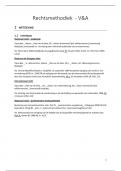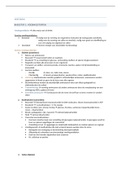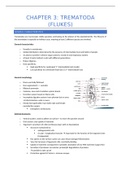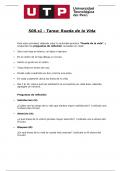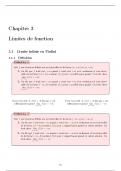Lectures
College 1
Ecohydrology learn objectives
Ecology – Plant physiology – how plants use water, i.e. the processes of water uptake by roots and
transpiration, unsaturated zone processes, photosynthesis, carbon and nutrient cycling, etc.
Techniques for estimating evaporation from the land surface (evaporation, rainfall, interception).
Techniques for estimating transport of water in the soil-atmosphere-plant system.
The characteristics of several ecohydrological systems
The effect of stress and disturbances on the resilience of ecohydrological systems.
The course focus is on the following subjects:
• transport of water in the unsaturated zone
• the significance of water to plants
• the role of water in plant physiology
• interactions between the vegetated land surface and the atmosphere and hydrosphere
• the physical description of these interactions, notably those of rainfall interception, soil water
uptake and evaporation and the feedback mechanisms between the vegetation and atmosphere
• the broad vegetation patterns of the world, how they originate and how they in turn determine the
• how different vegetation types have adapted to the environment and how they affect hydrological
processes
• The role of nutrients in vegetation growth
• the effect of changes in vegetation cover on catchment hydrological behavior
• the ecohydrological aspects of drought
• the ecohydrological functioning of selected ecosystems.
What is ecohydrology
Ecology: the study of the interactions between organisms and their natural environment, bot living and non-
living.
Hydrology: the science dealing with water of the earth, their occurrence, distribution and circulation, their
chemical and physical properties and their interaction with the environment.
Ecohydrology: the science of integrating hydrological processes with biota dynamics over varied spatial and
temporal scales.
Ecohydrology seeks to describe the interaction between hydrological and ecological patterns and processes.
“Areas of research in ecohydrology include transpiration and plant water use, adaption of organisms to their water
environment, influence of vegetation on stream flow and function, and feedbacks between ecological processes and
the hydrological cycle.”
Green water flows: evaporation/evapotranspiration
Changing perspectives:
Classic hydrology:
o What happens after rain hits the ground or canopy?
o Catchment based
o Local observations
New hydrology
o What is the role of humans in perturbing fluxes and stocks in the water
cycle
o Earth science, non-catchment perspective
, o Satellite remote sensing
a and d) gaps
b and e) labyrinth
c and f) spots
a) Normal situation: rainfall with
a lot of evapotranspiration
low run-off; atmospheric
transport input is the same as
the output = recycled rainfall
b) Deforestation: less rainfall is intercepted and evaporated
higher runoff; atmospheric transport is decreasing from
input towards output
The unsaturated zone
Hydrological importance:
Medium for plant growth (+ water and nutrients)
Intermediate transport zone to groundwater recharge
Passage and/or transformation of pollutants
Source of peak discharge during rain, and source of transported sediment (erosion)(sloping terrain)
Influences water and energy fluxes in the atmosphere
Unsaturated zone (zone of aeration, vadose zone): soil matrix (minerals and organic matter), soil water, air a 3-
phase system
Saturated zone: soil matrix, ground water
The thickness of the unsaturated zone is a function of geology, topography and climate. Range from negligible to
>150m.
The water flow is similar to flow in the saturated zone, with some complications.
Darcy’s law , but K and H strongly dependent on soil moisture content. This, together with the occurrence of
hysteresis in the K-h and h-teta relationships, leads to highly non-linear equations describing unsaturated flow that
usually require numerical models to be solved.
, When P < P1 there is negative pressure or tension/suction/capillary fringe
Origin of soil water suction – soil pores
• Soil material consists of many (more or less) aggregated particles with very narrow channels connecting the voids
between the particles.
• Soil pores are extremely variable in size, shape, length, etc. but may be represented by a frequency distribution of
short, narrow and straight cylindrical tubes (‘capillaries’).
• Each class of pores / capillaries has a certain diameter:
– macropores: > 100 μm (> 0.1 mm)
– mesopores: 30 – 100 μm
– micropores: < 30 μm
The soil texture (sand, silt, clay) doesn’t variate much in dept, on the contrary the pore size distribution is. At depth there are
fewer large pores.
• When a capillary tube is placed in water, the water rises into the tube, whereas the meniscus of the water surface is
concave upwards (i.e. hollow).
• The narrower the tube (i.e. the smaller the soil pore), the higher the water rises in the tube and the greater the
‘capillary action’.
Capillary action is the result of:
1. Adhesion of the water (= liquid phase) onto the capillary wall (= solid phase) causes a hollow meniscus.
2. Internal cohesion of the water molecules at the air-water interface.
A convex meniscus occurs when the molecules have a stronger attraction to each other (cohesion) than to the material of the
container (adhesion). A concave meniscus occurs when the molecules of the container attracts those of the liquid, causing the
surface of the liquid to cave downwards. The greater the curvature of the meniscus the greater the reduction in pressure P2
compare to P1.





